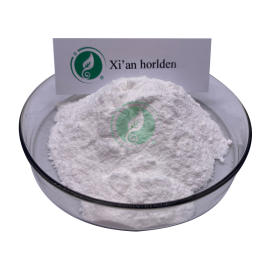The world's first wild pear genome map was successfully assembled
-
Last Update: 2021-02-26
-
Source: Internet
-
Author: User
Search more information of high quality chemicals, good prices and reliable suppliers, visit
www.echemi.com
August 1st, the World's first high-quality genome map of wild pears was published online in the Journal of Plant Biotechnology, an authoritative international botany journal. The results were done by Cao Yufen, a researcher at the Fruit Tree Research Institute of the Chinese Academy of Agricultural Sciences, and Tian Zhixi, a researcher at the Institute of Genetics and Developmental Biology of the Chinese Academy of Sciences.
the researchers, using Shanxi Du pear as the material, combined with PacBio three-generation sequencing, Bionano optical map, Hi-C technology, assembled a high-quality azale reference genome sequence, which is another important research progress in the field of pear genomics research in China.According to dr. Dong Xingguang of the Fruit Tree Research Institute, the first author of the
paper, the assembly size of the Duli genome is 532.7Mb, the contig N50 is 1.57Mb, a total of 59,552 protein-coding genes and 247.4Mb repeat sequences are annotated, and the integrity of the genome is evaluated by BUSCO, with a complete integrity of 95.9%.
the adversary dilation gene is significantly rich in secondary metabolic path, which may affect the adversity adaptability of the adversity. The results of esogen ratio analysis showed that the fruit size, sugar metabolism and transport of eastern pears, and photolysal efficiency were positively selected during domestication. A total of 573 NBS-type disease-resistant genes have been identified in the douric genome, 150 of which are TNL-type disease-resistant genes, the largest number in the published roseco genome, explaining the strong resistance of azac as a wild species.
Yufen, co-author of the paper, told China Science that during the domestication process, the sour taste of pear plant fruit gradually disappeared. It was found that the number of copies of the genes of the synthetic structure of azaloin was significantly higher than that of pears, which affected the accumulation of antholine. At the same time, anthocyanin reductase (ANR) metabolic pathway is the only way to synthesize anthocyanins, and the trans-membrane transport of sorbitol transport protein (SOT) may be the main factor affecting the accumulation of soluble organic matter.
Cao Yufen said the publication of the genome enriches the pear genus's plant genome information, and will provide important guarantees for pear genome research, functional gene mining, pear plant domestication and wild resource utilization.
relevant paper information:
This article is an English version of an article which is originally in the Chinese language on echemi.com and is provided for information purposes only.
This website makes no representation or warranty of any kind, either expressed or implied, as to the accuracy, completeness ownership or reliability of
the article or any translations thereof. If you have any concerns or complaints relating to the article, please send an email, providing a detailed
description of the concern or complaint, to
service@echemi.com. A staff member will contact you within 5 working days. Once verified, infringing content
will be removed immediately.







